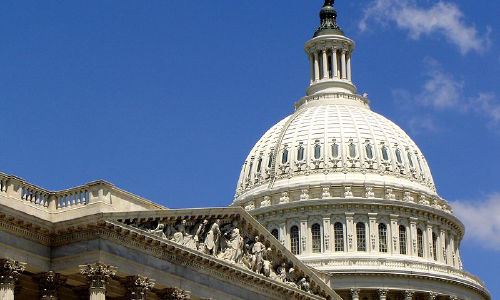Post
What new aid makes McConnell’s cut?

In an election year, the politics argue Congress will enact a fourth major COVID 19 economic stimulus bill, but the form it takes, what problems it seeks to solve and a price tag lawmakers will accept are undecided.
Senate Majority Leader Mitch McConnell (R, KY) has told all who ask he won’t bring to the Senate floor House Speaker Nancy Pelosi’s (D, CA) House-approved $3-trillion HEROES Act. He wants a more narrowly focused and less expensive aid package. He’s also declared any bill he blesses will include liability lawsuit protection for businesses. Save for those two conditions, it’s now a free-for-all to see what’s included in any package hoping for a Senate vote this summer.
Ranking Agriculture Committee member Sen. Debbie Stabenow’s (D, MI) “Food Supply Protection Act,” introduced this week with all Democrat ag panel members signed on, not to mention support from Senate Minority Leader Chuck Schumer (D, NY), is a most likely candidate for inclusion. Even with lopsided party support, the bill enjoys the endorsement of a host of ag groups ranging from the National Council of Farmer Cooperatives (NCFC) and the National Pork Producers Council (NPPC) to the U.S. Cattlemen’s Assn. (USCA) and the National Sustainable Agriculture Coalition (NSAC).
The bill carries an estimated $8-billion cost, and is a clever way for Congress to help farmers and ranchers pay bills and adapt without offering more direct payments. The bill would pony up $5.5 billion in grants and loans to pay for COVID 19 testing and personal protective equipment for processing plant workers and farm employees; help cooperatives and small/medium processors adapt to the post-crisis marketplace by helping retool existing facilities, buy new equipment and facilitate rolling out new products to new markets. The bill earmarks $1.5 billion to help food banks, schools and nonprofits to buy surplus foods, and $1 billion to eligible groups, including states and tribal programs, to expand cold storage capacity and allow USDA to buy and move more surplus commodity purchases. Restaurants could serve eligible surplus foods, and overall, the covered foods identified in the bill for “assistance” include meat, poultry, seafoods, eggs, fluid milk and dairy products, vegetables, fruits and some minimally or unprocessed products.
Another legislative candidate likely to make the cut in a McConnell-approved “phase four” aid package is increased Commodity Credit Corp. (CCC) spending/borrowing authority. The late-March CARES Act didn’t hit the mark GOP lawmakers wanted and the HEROES Act carried no new CCC spending authority.
Also, a likely passenger on the next economic stimulus train will be fixes to the Small Business Administration’s (SBA) Paycheck Protection Program (PPP) approved by the House this week. PPP provides federal “loans” which need not be paid back if companies agree to keep employees on the payroll or hire back laid off workers, along with a menu of other eligible expenses. The fix, which passed on a 417-1 vote, lowers from 75% to 60% the loan amount which must be spent on payroll expenses to qualify for forgiveness. It also expands from eight weeks to 24 weeks the time loan recipients must spend their PPP “loans.”
The immensely popular PPP has been plagued with problems since it was rolled out in the CARES Act. One of PPP’s biggest problems is that by federal definition qualifying “small businesses” can have up to 500 employees, so it was no real surprise when the first round of funding was sucked up within days of President Trump signing the new law. Nearly $650 billion has been approved in two rounds of funding.
It won’t be a surprise if some form of technical assistance is proffered to assist new, small and “diversified specialty” – organic, direct-to-consumer, “community supported agriculture (CSA)” – producers in getting their slice of the SBA, USDA pie.
Groups representing this subset of producers claim the aid programs are too complex for neophyte producers, and that qualification criteria skew to the benefit of big entities with greater sophistication dealing with federal programs, as well as better banking and legal connections. These farmers wanted a chunk of USDA’s aid funding to be used exclusively for the new, the young, the direct sellers. That didn’t happen.
USDA, which predicts 1.6 million applications will roll in for the Coronavirus Financial Assistance Program (CFAP) through August, said “lack of experience” with USDA programs shouldn’t be a barrier and that all producers, no matter the type or size, are eligible. Someone on the Hill will no doubt feel this is a problem in need of a legislative solution.

Add Comment